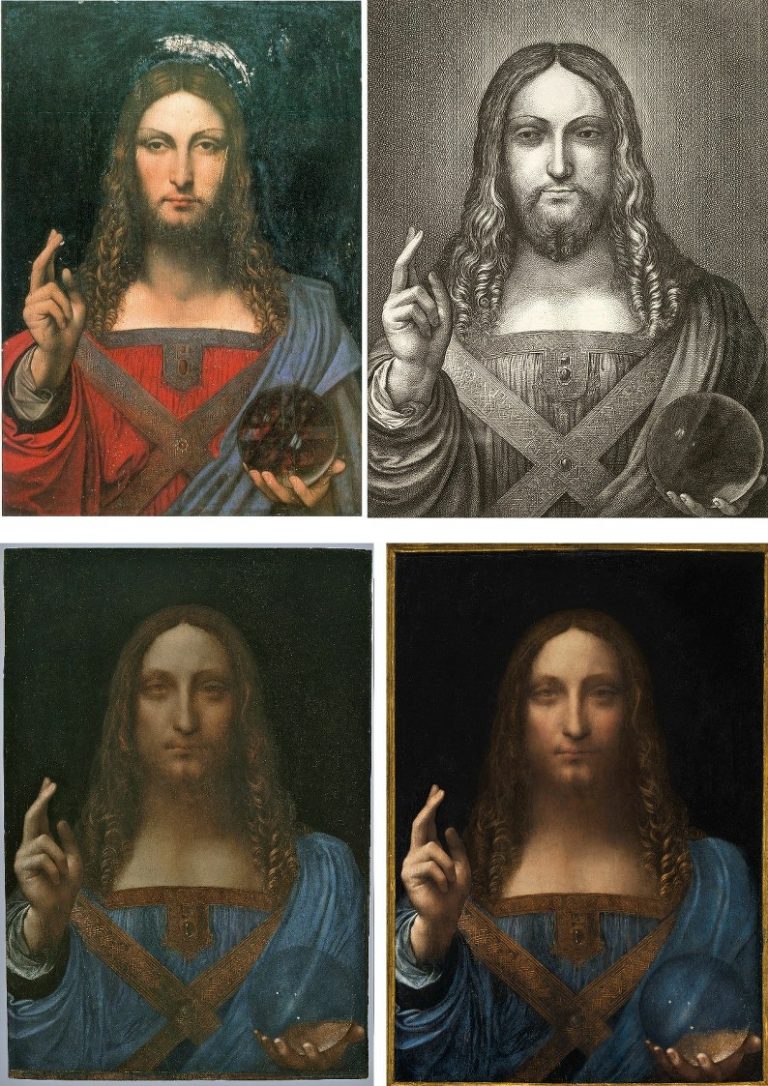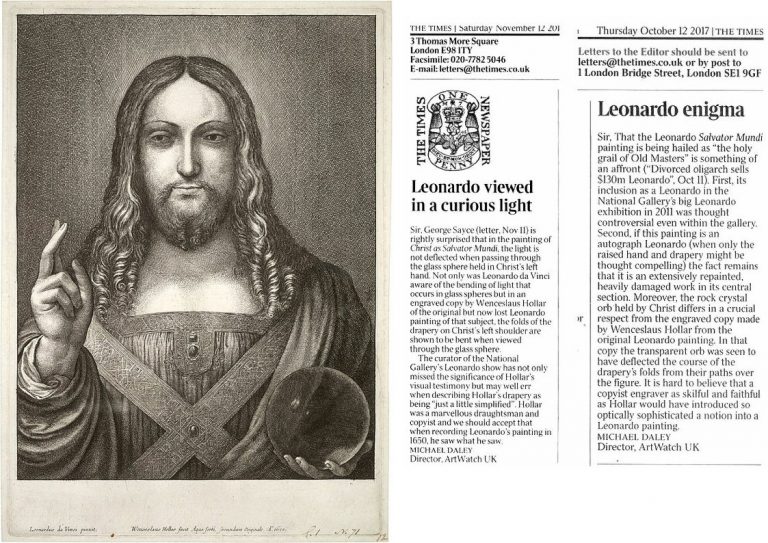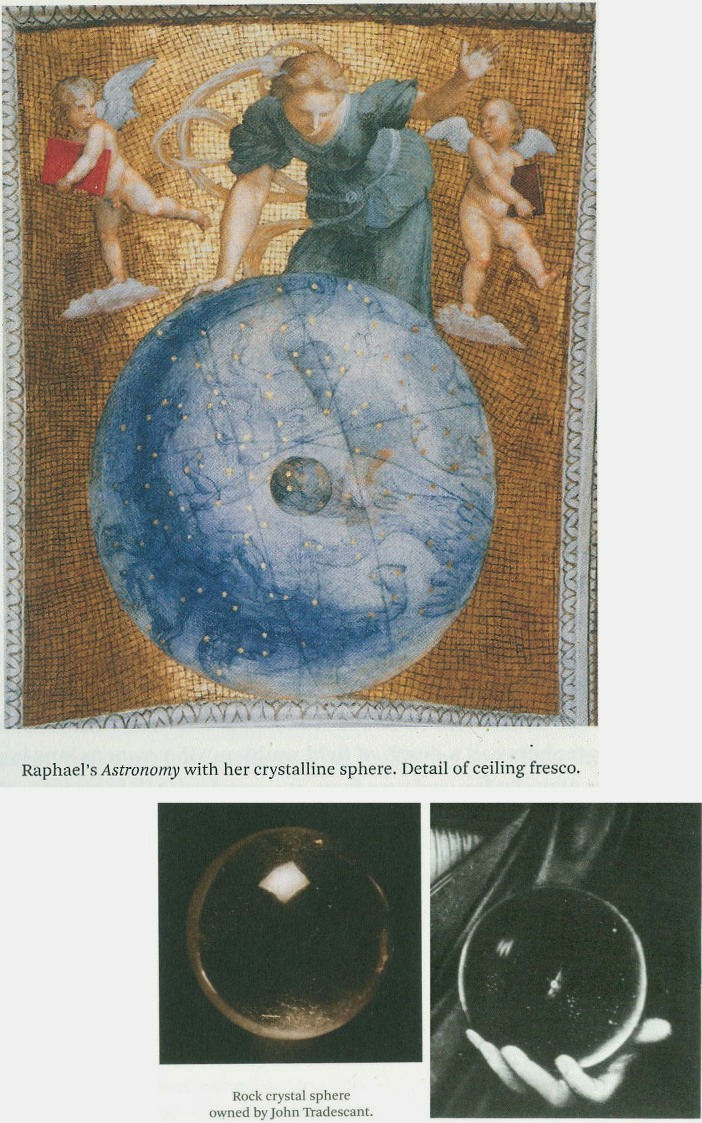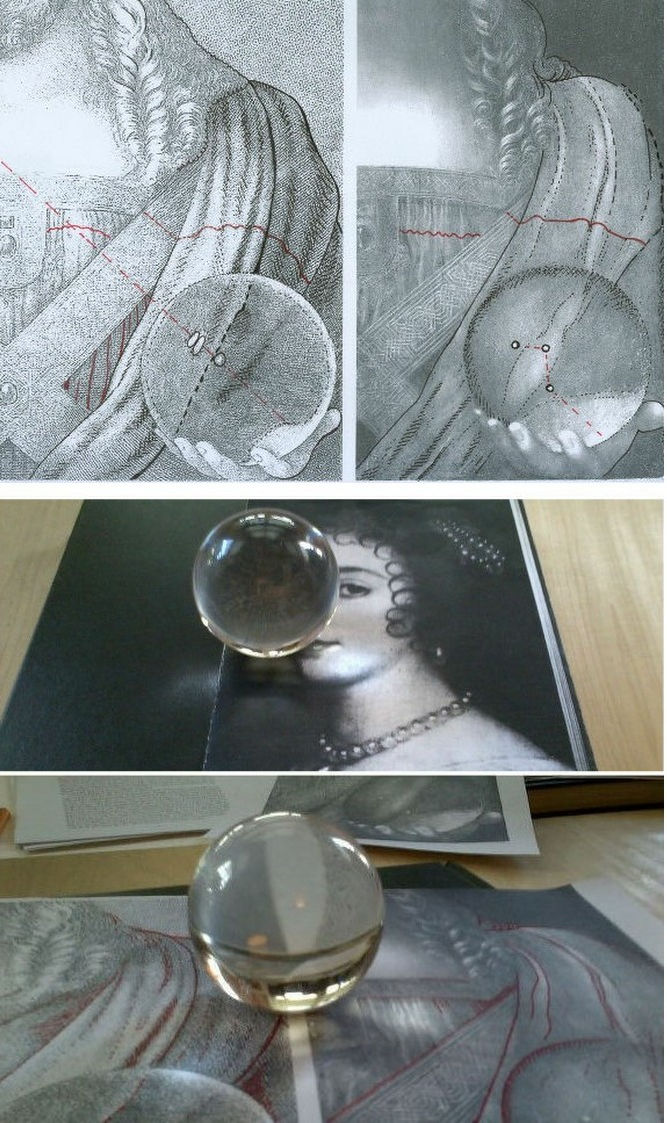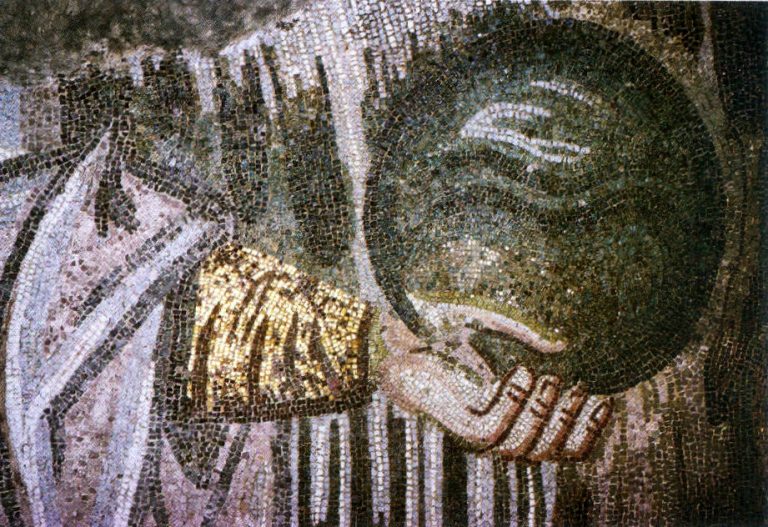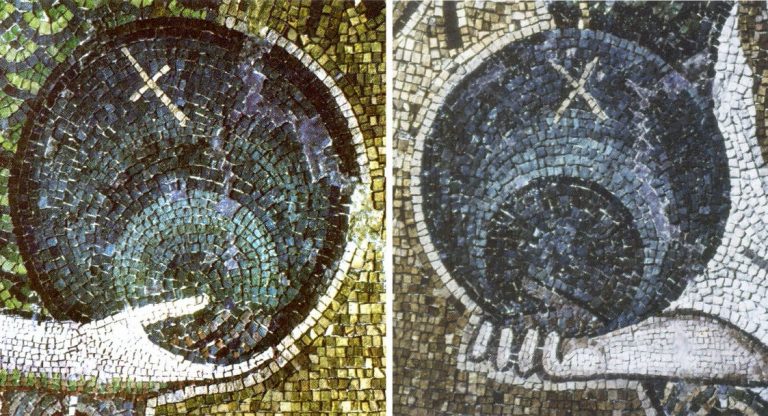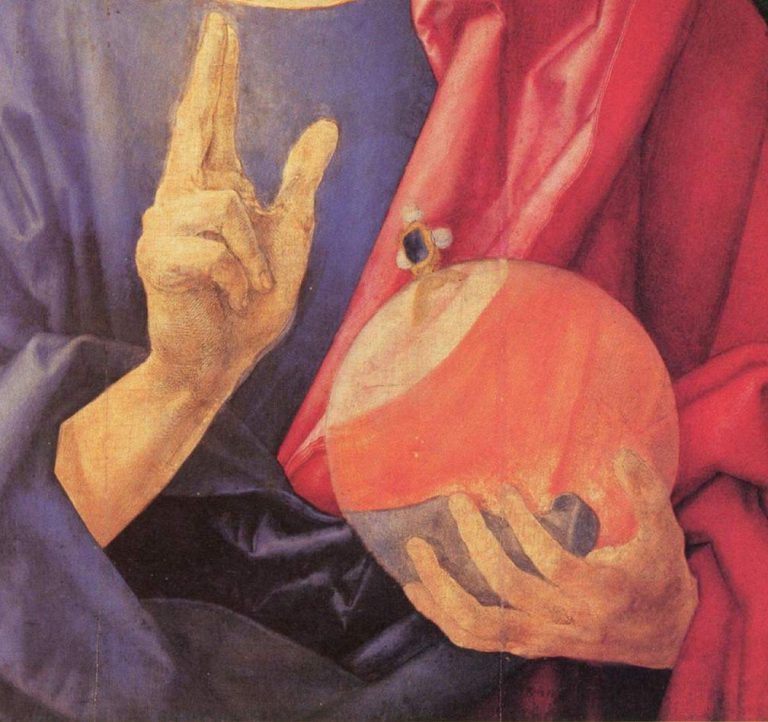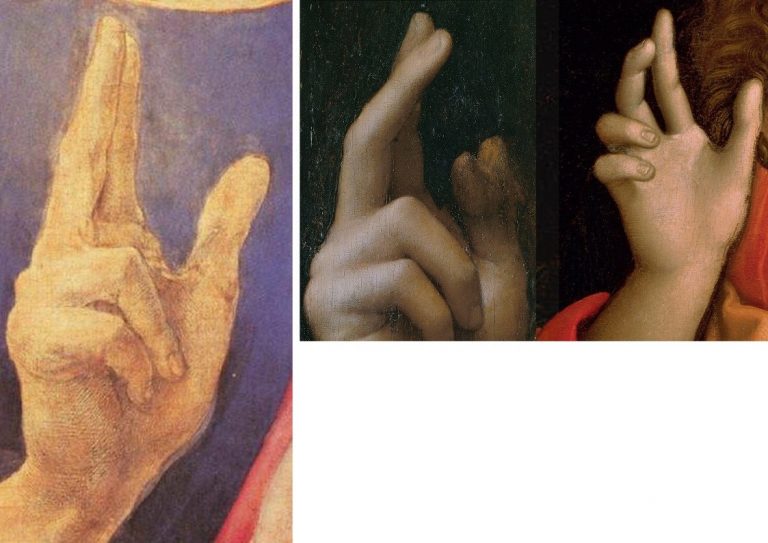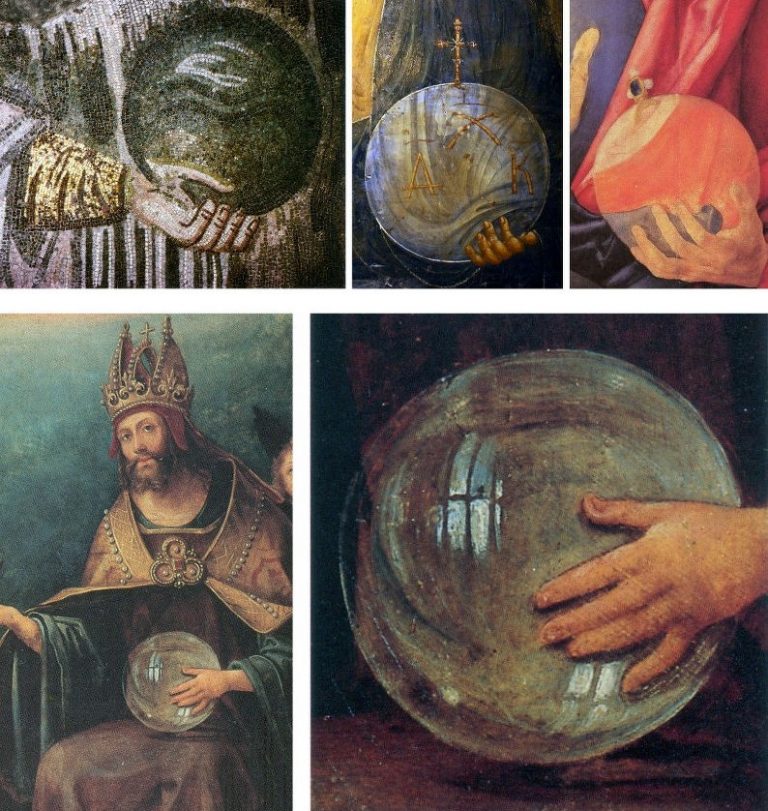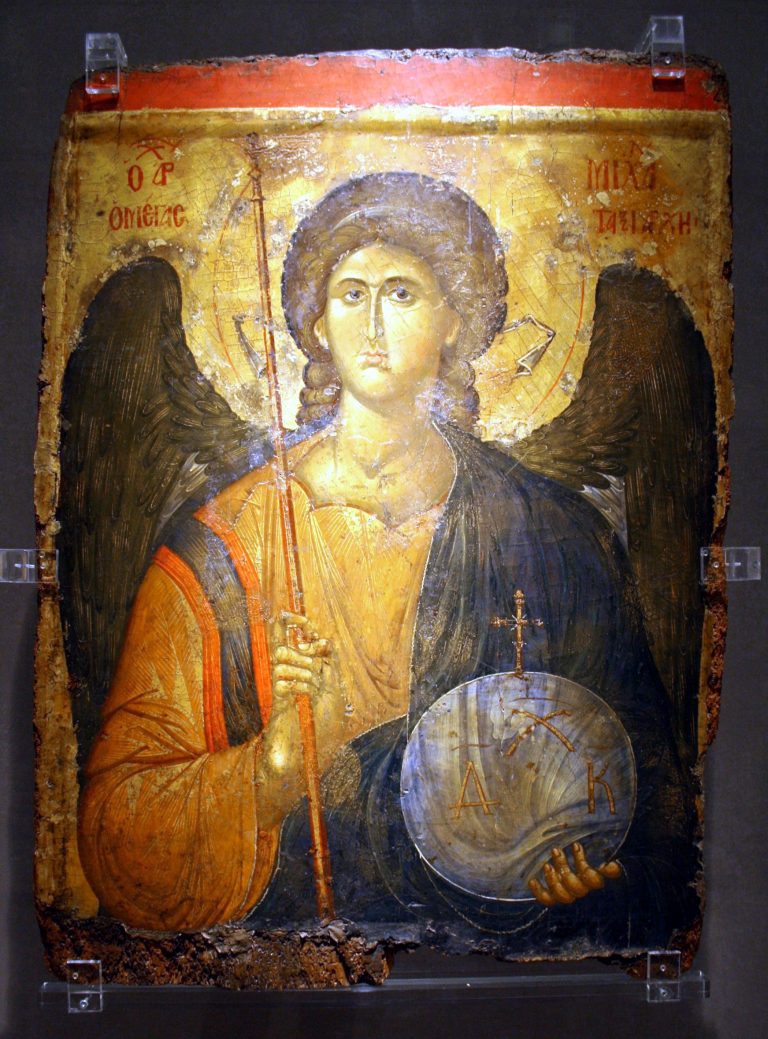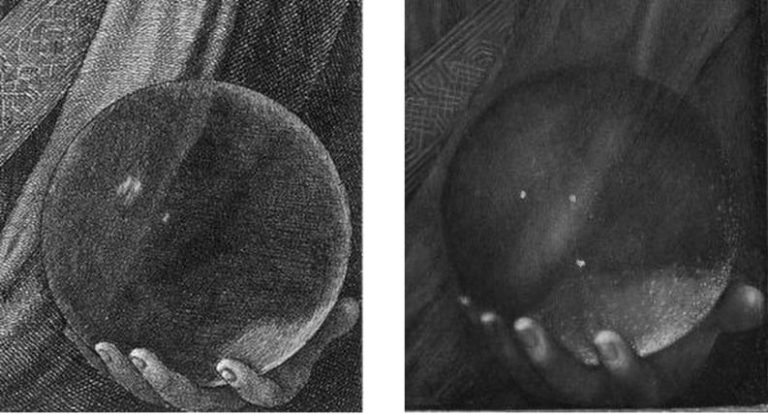The Saviour and a Stealth-Attribution
Martin Kemp and a dozen (largely mute) art historians bet the professional farm on a “from-nowhere” Salvator Mundi being an autograph Leonardo painting. On fetching $450m in 2017 it disappeared. No-one will say where it is. We now hear from a previously reliable source that it never left New York.
In February’s The Art Newspaper (“Doubly lost: Salvator Mundi fails to show up at the Louvre”) Professor Martin Kemp brings no news on the disappeared picture that he, more than any scholar, has championed. Instead, he bemoans the Salvator’s latest humiliating no-show at the Louvre’s Leonardo blockbuster exhibition (and demotion within the catalogue to the “Cook Collection” work) for having given fresh impetus to “personalised” tweets accusing him of “intimidating academics who disagreed”, and to what he deems fake news stories by journalists who confess to him that “what they are reporting does not stand up to scrutiny”. What never withstood scrutiny is the disappeared Salvator Mundi’s Leonardo ascription. The “qualitative” case for the Robert Simon and Co. picture being a Leonardo always rested on a self-defeating stylistic argument: that some of its parts were exceptionally well painted. We predicted the approaching Louvre no-show and Kemp denied it. Now, bereft of a credible espousal of a disappeared painting’s disappeared Leonardo ascription, Kemp swishes the robe of scholarly piety and tilts at the world’s unfairness:
“It has become hard to look fairly at the evidence in the complex, interlocked and cumulative way that Leonardo’s paintings require. In recognising a work as by Leonardo we have the inestimable advantage that we can adduce multivalent factors from his art, theory and science. The disadvantage of this complexity is that if one factor can be picked off (convincingly or not), it can be used to taint the overall argument.” (Emphasis added.) In supposed illustration of such tainting usages Kemp contends: “A good example is the silly dispute about the optics of the sphere that Christ holds in the palm of his hand.” It was not at all a good example to cite: as discussed below, Kemp has successively held two not properly acknowledged conflicted positions on the globe’s optics.
THE SALVATOR MUNDI GLOBE’S DISTORTING OPTICS
Above, Fig. 1: Bottom row, the missing Salvator Mundi, as exhibited at the National Gallery in 2011-12, left, and as offered for sale at Christie’s, New York, after further (covert) restoration at New York University in 2017; top row, left, the “de Ganay” Salvator Mundi which was proposed in 1982 (unsuccessfully) as the original Leonardo prototype painting; the Wenceslaus Hollar 1650 etched copy of a painting then believed to be Leonardo’s Salvator Mundi. Both candidate paintings were said to have been the subject of Hollar’s copy.
A CONFIDENTIAL INVITATION TO A SELECT COMPANY OF SCHOLARS
In March 2008 Martin Kemp was invited by the then new director of the National Gallery, Nicholas Penny, to join a small and select group of scholars to examine the Salvator Mundi painting – “We are only inviting two or three scholars”. The invitation was accompanied by the disclosure that scholars at the National Gallery and the Metropolitan Museum of Art, New York, were already “convinced that it is Leonardo’s original version”. Kemp responded immediately to the picture’s “vibration” and the extent to which “Signs of Leonardo’s magic asserted themselves.” He warmed to the New York art dealer, Robert Simon, “the custodian of the picture (whom I later discovered was its co-owner)…All I knew at this stage was that it was being represented by Robert Simon. He told me it was in the hands of a ‘good owner’ who intended to do the right thing by it, and I did not inquire further…” Kemp decided to research “every aspect of the Salvator Mundi” which had “seemed at first sight to resonate deeply with key aspects of Leonardo’s science of art and his views of the cosmos.” In 2019 Simon said of that National Gallery meeting: “Attribution seemed not to be an issue. There was no debate.” He further discloses that even as Penny was sending his invitations to the non-debating examination (- which occasion Ben Lewis has fleshed out admirably in his 2019 The Last Leonardo), he had dispatched Luke Syson, the National Gallery curator of its forthcoming Leonardo show, to New York, to view the Simon-fronted Salvator. Kemp reports that shortly before the 15 November 2017 sale of the Salvator Mundi at Christie’s, New York, “I was approached by the auctioneers to confirm my research and agreed to record a video interview to combat the misinformation appearing in the press – providing I was not drawn into the actual sale process.”
THE DISCOVERED OPTICS OF TRANSPARENT GLOBES
It is better practice for scholars to report what artists did do than to pronounce on what they would not have done. In his 2018 Living with Leonardo account, Kemp implies that he swiftly shifted position on the orb’s refractions during his theoretical journey on optics. In truth he had abandoned one position and adopted its antithesis. He recalls his early 2008 flush of excitement: “The most satisfying facet of my own research concerned my hunch that the globe was made of rock crystal…I had toyed with the idea that the double image of the heel of Christ’s right hand visible through the sphere might be the result of a double refraction characteristic of rock crystal; but the optics would not work. The apparent doubling is almost certainly another pentimento.” In 2018 (and therefore when speaking from his later adjusted position) Kemp advised:
“We should remember that Leonardo was drawing on his knowledge of rock crystal to devise a large sphere for Christ to hold – he was not making a ‘portrait’ of an actual sphere, nor was he following all its optical consequences to their logical conclusions. I have been asked on more than one occasion why the drapery behind the sphere is so little affected by what is, in effect, a large magnifying lens. The answer, in a word, is decorum; that is to say, pictorial good manners…Leonardo’s paintings remake nature – not only in accordance with natural law, but also in obedience to the rules that govern functioning images. He would not have disrupted the efficacy of the painting as a devotional image.”
His enthusiastic researches grew fast: “By early November 2008 I had a substantial essay of more than 8,000 words in draft, albeit with more research to conduct. The draft expanded as months went by. At one point it was entitled ‘New Wine in an Old Bottle’, to acknowledge that Leonardo had endowed a very traditional format with radically new features.”
THE NOVEMBER 2011 NATURE MAGAZINE (- “Art history: Sight and salvation”)
Those researches had been earmarked for a book of essays to be published by Yale University Press and sold at the National Gallery’s 2011-12 blockbuster exhibition, “Leonardo da Vinci: Painter at the Court of Milan”. When that book failed to materialise Kemp, ever media-savvy, “turned to outlets that would deliver in time for the opening of the exhibition – not for the full research, but to get across some key points. The outlet over which I had most control was the regular column I was then writing in the science magazine Nature. There was enough science in the topic to justify the inclusion: not only the fruits of the scientific examination, but also Leonardo’s optical ingenuities and the cosmology of the crystalline sphere. The essay appeared on 10 November [2011], one day after the opening of the show.”
At that date Kemp was still holding to his initially gratifying hypothesis of materially refracted images petrified within the depicted crystal orb. In the November 2011 Nature, he specifically noted: “It seems that he [the artist] observed the double refraction produced by calcite. The heel of Christ’s hand exhibits two distinct contours, not in this case due to a change of mind.” Thus, three years on, Kemp was still “toying” with the idea that the orb depicted naturally generated refractions at the moment when the National Gallery exhibition opened and after the publication of its catalogue. What would induce an abandonment of that position? For that matter, why did the hand, as seen through the globe, change between 2011-12, when at the National Gallery, and 2017, when about to be sold by Christie’s, New York? (See Fig. 5, below).
THE BIG FLIP AND A PROVENANCE DAISY-CHAIN
Two days after publication of Kemp’s article the Times published our first intervention in which we noted that in 1650 Wenceslaus Hollar had copied refractions in the drapery seen through the orb in a painting believed at the time to be by Leonardo (see above, left, Fig. 2). Neither Kemp nor the National Gallery responded to the letter even though this optical discrepancy carried lethal provenance implications for the National Gallery’s (mysteriously owned) then-attributed Leonardo Salvator Mundi: if that painting showed no such deflected drapery, it could not have been the version copied by Hollar, as was claimed in the exhibition catalogue entry by its National Gallery curator, Luke Syson, (albeit on the borrowed researches of Robert Simon, who in turn had drawn on the not always substantiated researches of Joanne Snow-Smith who, in 1982, had proposed another Leonardo school variant – the “de Ganay” picture, top left, Fig. 1 above – as the original prototype painting). If the Simon-fronted Salvator had not been copied by Hollar then there could be no claims of English or French royal connections and, in consequence, there would be no record of the painting before 1900, when it entered the Cook Collection in England – from which collection it would be sold in 1958 for £45…to be picked up by Simon and Co. in the USA for $1,175 in 2005. In short, the Gallery had no historical support for its claim that this was a “lost” original autograph prototype painting for the very many and various Salvator Mundi paintings generated within Leonardo’s school.
Above, Fig. 3: Left, a detail of Wenceslaus Hollar’s copy showing refractions of drapery seen through the orb; right, a detail of the Salvator Mundi painting showing no refractions of drapery. This image shows the painting not as when exhibited at the National Gallery in 2011-12 but as when offered for sale in 2017 after further (covert) restoration carried out at New York University. Note here the radically different depictions of the hands holding the orb and the way light had accumulated around the circumference in Hollar’s orb.
Although our letter elicited no response, in the next issue of Nature, Kemp’s comments on the orb’s optical properties came under explicit technical challenge. On 21 December 2011, five weeks into the exhibition, Nature published an exchange between Professor Kemp and a Dutch scientist, André J. Noest, who rejected Kemp’s claim that the double contour of the heel of the hand was the product of a double refraction within a calcite orb and did so precisely on the grounds that: “The painting shows no optical distortions in the folds of the clothes, for example, as would be expected from refraction by an orb of calcite, quartz or glass, or even a water-filled glass vessel.” Moreover, “The double contour of the hand continues slightly outside the orb, hence it could be due to a previous stage of the painting, or pentimento. The absence of refraction or reflection effects suggests that the orb depicts an idealised celestial sphere, with the painted specks on its surface representing heavenly bodies.”
Kemp immediately caved: “As far as we can tell, given the damage to the Salvator Mundi, the garments behind the sphere are indeed undistorted”. While so-saying he again made no reference to the contrary testimony of Hollar’s copy, even though, on 10 November 2011, he had written:
“The second variety of ‘scientific’ evidence is particular to Leonardo. He insisted that painting is a science — it relies on a systematic body of knowledge based on a deep scrutiny of cause and effect in nature. He saw painting as ‘the sole imitator of all the manifest works of nature … which with philosophical and subtle speculation considers all manner of forms … all of which are enveloped in ‘light and shade’. For any painting to be recognized as a Leonardo, it has to bear witness to such mighty ambitions. The Salvator Mundi, he held, “does so on two main optical counts…” One count was:
“The other optical effect is unique to this painting, both in Leonardo’s work and in the Renaissance more generally. The orb is not the standard globe of the world. It is translucent and glistens internally with little points of light. These are not the spherical bubbles found in glass, but are the kind of cavity inclusions (small gaps) that appear in some specimens of rock crystal and calcite. Leonardo, we know, was considered an expert in such semi-precious materials. It seems that he observed the double refraction produced by calcite. The heel of Christ’s hand exhibits two distinct contours, not in this case due to a change of mind. (Emphasis added.)
KEMP’S DISCUSSION OF THE ORB’S OPTICAL PROPERTIES
In 2018 in his memoir Living with Leonardo, Kemp reproduced just two images of orbs, as above, Fig. 4, top and centre, and wrote: “I had toyed with the idea that the double image of the heel of Christ’s right hand visible through the sphere might be a double refraction characteristic of rock crystal but the optics would not work. The apparent doubling is almost certainly another pentimento.” Again, he made no acknowledgement of Hollar’s testimony. Nor did he address the striking similarities of the Tradescant orb, as he photographed it, with that copied by Hollar and that encountered in the Worsey picture (Fig. 4, above, bottom right). Similarly, he later declined to address the differences evident in the orb between 2012 when it left the National Gallery and 2017 when offered at Christies – see Fig. 5 below:
BODIES OF COMPARATIVE VISUAL EVIDENCE
None of the many Leonardo school Salvators shows the hand in the massive and double-edged manner of the now-disappeared version (as above at Fig. 5). Just as the illumination seen in Hollar’s orb, Fig. 6, below, left and top, is strikingly similar to that seen in the lost Worsey picture’s orb, so too in both images the hand holding the orb is shown distorted and compressed towards the orb’s circumference.
While Kemp seems proud to have been the first to suggest a rock crystal orb, an orb’s material composition is of little artistic consequence in terms of its capacity to distort. Our small solid glass orb shown below at Fig. 7, demonstrates in the lower image how, when an orb straddles a parallel gap between two pictures, that gap is shown (inverted) at the top of the globe as two curved, not straight lines.
EARLY AND CONTEMPORARY ORBS
Kemp’s claim that sensationalising critics make it difficult to conduct a duly “sober and systematic analysis of primary sources” seems rich. So far as we know, he has never addressed Ludwig Heydenreich’s groundbreaking 1964 study of the many Salvator Mundi pictures produced by Leonardo’s school and followers. (We published all of Heydenreich’s illustrations – including that of the lost “Worsey Collection” picture – the day before Christie’s sold the disappeared Salvator Mundi for $450 million – see “Problems with the New York Leonardo Salvator Mundi Part I: Provenance and Presentation”.)
Kemp praises Robert Simon’s researches: “He assembled a large bank of research images, including a growing number of copies or variants which testified to the hold that Leonardo’s inventions exercised on other artists and patrons.” In the long-promised Margaret Dalivalle, Martin Kemp and Robert B. Simon book Leonardo’s Salvator Mundi, Simon acknowledges Heydenreich’s work as “The most significant publication on the subject” and “an excellent introduction to the subject”. Further he acknowledges that Heydenreich had concluded, on the very great variations present in the works, that no autograph Leonardo painting had been produced. At the same time Simon describes the Salvator Mundi, as “One of three lost paintings by Leonardo known from copies”. What had changed since Heydenreich? Simon’s researches had identified “several more painted versions and variants”, but none was considered to have approached “the quality of our painting”. In that case, the logical/stylistic problem strengthened: where bona fide Leonardo paintings exist, all copies, however variously talented their authors, can be seen to sing from a single design sheet. In this case, the more anarchically various works emerge, the less plausible they become as supposed copies of a single autograph work.
No case – and even less any visually-comparative case – has been compiled to show the Simon and Co. painting had served as a prototype for all versions. Simon tacitly concedes this methodological lapse when saying: “this image of Christ was more of a curiosity, since relatively few versions of the Salvator Mundi composition were known and, unlike copies of the Mona Lisa, there was little consistency in the details among them; each seemed almost an interpretation of the subject rather than a faithful reproduction of a common original.” That central problem persists at macro and micro levels: if Leonardo had painted a large hand with a horizontal thumb, the tip of which was cropped by a pre-fixed frame, why did no other painting echo or follow his example? In his catalogue entry, Luke Syson says of this hand that-no-one-copied, that although it is seen through a crystal orb, “Christ’s hand seems miraculously undistorted” and that “Leonardo has therefore created an object which would be understood as a piece of divine craftsmenship, but still be his own invention.”
Kemp had checked in the photographic library of the Warburg Institute to see what other artists had made of the orb in Salvator images: “There was quite a variety. Brass globes were common, sometimes with a cross on top. Some took the form of terrestrial globes with indications of land and seas. Others were made of glass, and a few contained little landscape vistas. In two Venetian examples Christ placed his hand on an ample glass orb – appropriately enough, given Venice’s pre-eminence in glass manufacture. But none seemed to show a crystal sphere.”
Much as Kemp hugs the especial qualities of crystal, with regard to the supposed prohibition against artists indicating refractions within transparent orbs (on grounds of propriety and decorum) the nature of the material – glass, crystal or quartz – is immaterial: if an orb gives rise to spherically-determined distortions it gives rise to spherically-determined distortions. (The mention of Venetian glass-making skills might be considered germane to this subject.) This attribution was made on a manifestly incomplete programme of studies: every time Kemp explains absences of refraction on the Simon Salvator by invoking “decorum” and “pictorial good manners” he ignores the testimony of Hollar who had copied defractions on a painting then judged to by Leonardo in 1650. Those deflections on that carefully dated 1650 etching are both material and historic facts. Where is that painting? Had Liz James’ splendid and technically illuminating 2017 book Mosaics in the Medieval World been published earlier, Kemp might have appreciated that even devout Byzantine mosaic-makers had no qualms about depicting refractions within Celestial Globes.
TRANSPARENT ORBS FROM BYZANTIUM TO DURER
Above, Fig. 8: Left, The Archangel Gabriel, Hagia Sophia, Istanbul, ninth century; top, an apse mosaic depicting the Mother of God and her Child and the archangels Michael (left) and Gabriel at the sixth century Church of the Panagia Angeloktistos, Kiti, Cyprus.
Above, Fig. 9: the orb held by the Archangel Gabriel at Hagia Sophia.
Concerning decorum, how would Kemp account for the above Byzantine mosaic image of a transparent orb held by the archangel Gabriel in which the thumb and part of the supporting hand are visible through the orb; in which a deflected image of the gold sleeve is present; and in which the straight-edged, vertical feathers of Gabriel’s wing have been rotated horizontally and given wavy form when viewed within the orb? In the two sixth century orbs below at Fig. 10, as held respectively by the archangels Michael and Gabriel, four fingers are shown through the orb in the one and the thumb and part of the hand in the other. Has consideration been made of the longevity of depictions of transparent orbs in sacred Christian images?
In Fig. 11, above, we see part of Durer’s (unfinished) Salvator Mundi in the Metropolitan Museum of Art. Have Simon and Kemp – not to mention the Met’s own declared curatorial and conservation supporters of the attribution – not considered the possible relationships between the two great contemporary artists, Leonardo and Durer?
In Fig. 12, we see that Durer showed defractions of drapery within his transparent orb. Was he aware before 1505 of such a usage in Leonardo? Was Leonardo aware of Durer’s depiction? Was this (then-in-progress work) one of the panels Durer is known to have taken to Venice in 1505? Could Leonardo have known of this incomplete, in effect, part-coloured drawing of a Salvator Mundi with a large refractions-generating transparent orb?
Regarding Fig. 13, above, how should we consider the coincidences between Durer’s Salvator Mundi of 1505 and Hollar’s 1650 copy made in Antwerp after a Salvator Mundi then said to be by Leonardo?
Above, Fig. 14: The compilation of three hands above highlights the paucity of scholarship that accompanied the sustained and effectively covert drive to have the Simon and Co. Salvator Mundi accepted in the 2011 National Gallery exhibition as an autograph Leonardo. Ben Lewis has established that the hand on the right is found on a Salvator Mundi painting now given to Giampietrino. It lives in the Pushkin Museum, Moscow, and is incontrovertibly the Salvator Mundi that was once in Charles I’s collection, where it was given to Leonardo. Simon, Kemp and others have held that “their” Salvator Mundi was that recorded Charles I painting and that it had been copied by Hollar almost a century and a half later. Self-evidently the Pushkin Salvator cannot have been copied by Hollar because it is an entirely different – and more obviously Leonardo-like – compositional type. Without anticipating Jacques Franck’s forthcoming comments on the mis-drawn hand in the centre above, we can surely see here that in 1505 Durer and, perhaps a little later, Leonardo’s student Giampietrino had both made a better fist of drawing a Blessing Hand than had the Master of the Simon/Kemp and others’ Salvator Mundi?
Michael Daley, Director, 5 February 2020
UPDATE – 11 February 2020:
Collective Failures of Due Scholarly Diligence and Visual Acuity
Following publication of the above post some contend that the former Cook Collection Salvator Mundi painting failed to leave New York after the 15 November 2017 sale because the successful bidder declined to pay in full; and, two further Byzantine orbs showing refracted draperies have emerged, as shown and discussed below. While the monumental mystery of this painting’s whereabouts constitutes a globally shared preoccupation, it is not the essential professional concern in this affair. Before auctioneers entered the scene, a seemingly self-selecting group of international scholars by-passed all means of open appraisal, contention and debate – and then disparaged all subsequent critics. In our view, the magnitude of this particular visual misreading by a group of leading art historical figures rivals that encountered forty years ago on the restoration of Michelangelo’s Sistine Chapel ceiling frescoes.
Above, Fig. 15: The historical sequence of previously un-noted transparent orbs showing refracted drapery grows. A correspondent suggests that the orb encountered on the 14th Century icon of the Archangel Michael in the Byzantine & Christian Museum in Athens (as above, top centre, and below at Fig. 16) might have been known to Leonardo. If that seems unlikely – the Athens museum links the icon to a mural cycle of 1315-1320 in a Constantinople monastery – certainly, its existence might not have been expected to elude scholars today who enjoy full access to university libraries and the internet. An earlier German picture, the Athenaeum’s 1514 Coronation of the Virgin by Hans Süss von Kulmbach (above) not only contains an orb showing refracted drapery but one that appears to float and cast a shadow on God the Father’s lap – here the hand seems to be holding the orb in place rather than supporting it. In his 1998 book On Reflection Jonathan Miller noted the anomalous reflections of a window on the orb and toyed with the thought that they might have carried an allegorical function by symbolising the idea that the universe itself is a church, but he added, “they do look like the windows in the artist’s studio”. Indeed, and the upper reflection appears even to show a safety catch. It might be thought inconceivable that Durer would not have known of this orb and its treatment: von Kulmbach being the former Durer apprentice who took over the production of his master’s altarpieces in 1510. Durer, who likely had designed this orb, could not have been indebted to Leonardo and his school on transparent orbs – which underlines the unaddressed question: were they apprised of the great German master’s earlier engagement with such orbs?
Above, Fig. 17: Of course, any scholar might overlook a particular historic work. The real professional lapse here lies in a group-failure to recognise the import of manifestly un-like images. For example (and as mentioned above) it was crucial to the recent campaign to upgrade the Cook Salvator Mundi that it be accepted as the one-time subject of Hollar’s 1650 etched copy of a Salvator Mundi painting then thought to have been painted by Leonardo. If we allow for the fact that even so good a copyist as Hollar might not be expected to reproduce faithfully every detail of a relatively large painting in small etching; and, even, if we make allowances for what are nowadays euphemistically described as paintings’ “conservation histories”, no visually alert expert professional should have believed that Hollar might have copied his orb/hand, as above left, from that found on the former-Cook Collection Salvator Mundi, as shown above, right. Given the scale on which Hollar worked, the challenge of perfectly reproducing the elaborate geometric knot-pattern decorations on the stole might seem like an invitation to fudge or dissemble but, in truth, we see that Hollar contrived, in-miniature, a complex geometric pattern that is remarkably close in spirit and appearance to that encountered on the Cook Leonardo school Salvator Mundi painting. Given that close correspondence, it is simply inconceivable that Hollar derived his image from the orb/hand present on the (now-disappeared) painting, as seen above right.
A CATALOGUE OF ERRORS AND MISSTEPS
Even when the originally claimed derivation was being announced by Luke Syson in the catalogue entry to the 2011-2012 National Gallery Leonardo blockbuster exhibition, certain reservations were declared. In this regard Syson’s entry itself constitutes a catalogue of art historical missteps. First, he holds that it had “always seemed likely” that Leonardo had painted such picture. In a footnote supporting his claim, Syson states that he was writing on the authority of a then-pending and more detailed publication of this picture by Robert Simon and others:
“I am grateful to Robert Simon for making available his research and that of Dianne Dwyer Modestini, Nica Gutman Rieppi and (for the picture’s provenance) Margaret Dalivalle, all to be published in a forthcoming book.” That book notoriously did not materialise until 2019. It is titled Leonardo’s Salvator Mundi & The Collecting of Leonardo in the Stuart Courts. In his introduction, Simon claims it to be “the first to treat the painting monographically.” Some monograph: Modestini’s contribution was dropped – as was that of Gutman. Thus, there is no horse’s-mouth account of the picture’s long and various campaigns of restoration and no technical reports are carried. As also mentioned above, Simon acknowledges that, on the historically most thorough examination of the available evidence, Professor Heydenreich had concluded that Leonardo had not painted a Salvator Mundi.
Ill-logic has stalked this Leonardo ascription. When discussing an earlier claim that Hollar’s etching had been made after a different Leonardo painting then being advocated as a Leonardo original, Syson sensibly notes that “Hollar might very well have been copying a copy.” He further admits that the combined facts of the Hollar copy and the many workshop painted copies do “not constitute proof that Leonardo painted a Salvator Mundi.” Syson even nods towards Heydenreich’s thesis: “it has sometimes been argued that [certain…] drawings might have formed the basis for one or more finished designs – perhaps cartoons – that he [Leonardo] made expressly to be copied by pupils but with no primary version by the master himself.” But then against that, and in emulation of Simon, Syson takes the stripped-down and re-painted former Cook Collection Salvator Mundi picture to constitute proof in itself that Leonardo had painted his own prototype for all other copies after all, and that this version comprises the now-supposed and claimed “lost” Leonardo: “The re-emergence of this picture cleaned and restored to reveal [sic] an autograph work by Leonardo, therefore comes as an extraordinary surprise.”
In part, the surprise to Syson stems from the fact that a correspondence between the Cook picture and the Hollar copy is not complete: “Though Hollar’s Christ is very slightly stouter and broader, the two images coincide almost exactly” even though “The draperies are just a little simplified and there is no glow of light around Christ’s head.” Among the listed similarities, “the knot-pattern ornament on Christ’s crossed stole and the border of his vestment are very similar indeed, a particularly important consideration given that this ornament is the aspect most susceptible to change in the different surviving versions.” Now, if the perceived similarities between the Hollar copy and the Cook picture count in the latter’s favour, does it not follow that their dissimilarities should be counted in the latter’s disfavour? It seems that this $64,000 (-in fact $450 million) question may never have been asked by those who formed an orderly queue to ascribe the much remodelled former Cook painting to Leonardo himself. In our view that apparent omission is the gravest and least explicable of all: in the visual arts generally and in the making of ascriptions particularly, differences, no less than similarities, are of the essence. We have itemised the many dissimilarities previously. In Fig. 18, below, we pare the question down to a single comparison of the Hollar and Cook globes so as to pose the simple question: if this comparative image below constituted a newspaper “Spot the differences” quiz, how many differences would you be able to identify? To make the question easier, we have outlined some of the more massive and glaring discrepancies in white chalk.

